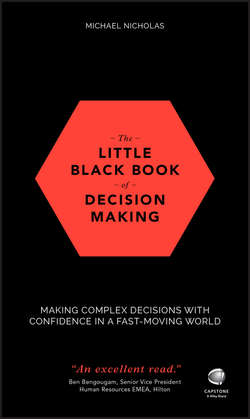Читать книгу The Little Black Book of Decision Making - Nicholas Michael - Страница 8
На сайте Литреса книга снята с продажи.
Part One
No Place for Old Dogs: New Tricks Required
1
Let's Get Real: We All Make Mistakes
ОглавлениеAt 11.38 a.m. on 28 January 1986, the NASA space shuttle Challenger took off from Kennedy Space Centre at Cape Canaveral, Florida. Seventy-three seconds later, as it broke up, the liquid hydrogen and oxygen that was by then streaming from its ruptured fuel tanks explosively caught fire and enveloped the rapidly disintegrating spacecraft. The deaths of its seven crew members – including Christa McAuliffe, who would have been the first teacher into space – in such a catastrophic and shockingly visible way may well be the reason why this disaster, despite it having no real impact on the lives of the vast majority of those observing it, became the third fastest spreading news story ever.
Following the accident, U.S. President Reagan rapidly set up a special commission (known as the Rogers Commission, after its chairman) to investigate it. The consensus of its members was that the disintegration of the vehicle began after the failure of a seal between two segments of the right solid rocket booster (SRB). Specifically, two rubber O-rings designed to prevent hot gases from leaking through the joint during the rocket motor's propellant burn failed due to cold temperatures on the morning of the launch. One of the commission's members, theoretical physicist Richard Feynman, even demonstrated during a televised hearing how the O-rings became less resilient and subject to failure at the temperatures that were experienced on the day by immersing a sample of the material in a glass of iced water. There is no evidence that any other component of the space shuttle contributed to the failure.
I've found, from years of asking participants in my decision-making workshops, that most people's memory of that day aligns with the summary in the paragraphs above. Though relatively few are aware of the precise name of the actual component involved, they consistently remember only the seal failure. This root cause appears unambiguous. So why would the Rogers Commission have concluded, as they did, that the key factors contributing to the accident were NASA's organisational culture and decision-making processes, not the technical fault? We need to take a deeper look.
